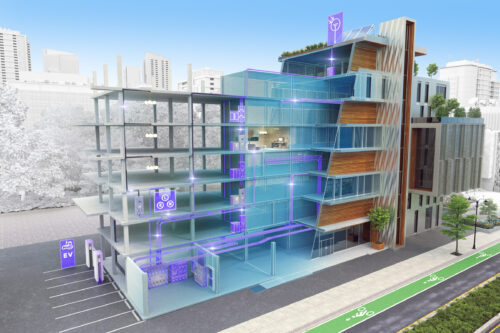The Positive Effects of Green Roofs
CSE's March 2002 issue featured an article on the growing importance of water conservation and detailed some projects that have conserved water through a variety of methods, including the use of green roofs. This "Deep Link" goes on to explain some further advantages of green roofs.
There are numerous benefits for pursuing green roofs, aside from a healthier environment. In fact, according to Green Roofs for Healthy Cities ( www.peck.ca./grhcc/about.htm ) a cider cooling and storage facility in Frankfurt, Germany achieved a 2-3 year payback of its green roof through savings in heating and cooling costs, as well as in equipment costs, since additional cooling towers became unnecessary.
Other benefits, according to the organization, include:
-
Protection of a roof’s membrane, resulting in a much longer material life span, decreased maintenance and savings in replacement costs.
-
Utility savings via a decreased need to expand or rebuild related infrastructure from increased stormwater retention, as water is stored by the substrate and then taken up by the plants.
-
Green roofs not only retain rainwater, but also act as natural filters for any of the water that happens to runoff.
-
Increased insulation value, resulting in energy heating and cooling costs, as shading the external surface of a build-ing envelope has been shown to be more effective than internal insulation.
-
A green roof will not only absorb heat, decreasing the tendency toward thermal air movement, but will also filter the air moving across it.
-
Moderation of the Urban Heat Island Effect, the difference in temperature between a city and the surrounding countryside. Via their daily dew and evaporation cycle, plants on vertical and horizontal surfaces are able to absorb some of the solar radiation that tends to be reflected off the expanse of hard city surfaces, such as roofs, which absorb solar radiation and re-radiate it as heat. Reduction of this phenomenon can also reduce the distribution of dust and particulate matter throughout the city. This can play a role in reducing greenhouse gas emissions and gain greenhouse gas emissions trading credits.
-
Soil, plants and the trapped layer of air can be used to insulate for sound. Sound waves produced by machinery, traffic or airplanes can be absorbed, reflected or deflected.
-
Improved aesthetic appeal, increasing property value.
-
Psychological studies have shown that the restorative effect of a natural view holds a viewers’ attention, diverts their awareness away from themselves and from worrisome thoughts.
-
Job creation for those in the design, roofing and landscaping industries.
Do you have experience and expertise with the topics mentioned in this content? You should consider contributing to our CFE Media editorial team and getting the recognition you and your company deserve. Click here to start this process.





